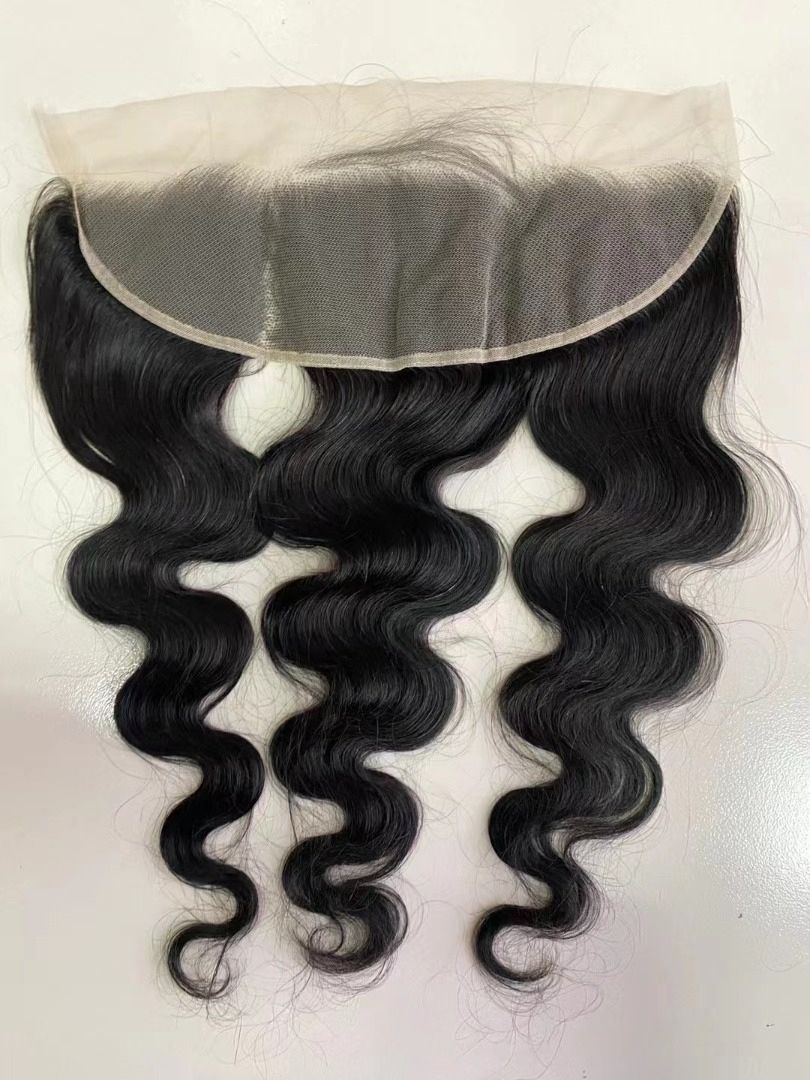How to Build a Successful Business Supplying Wigs to Hospitals

Share
The shortest path to a sustainable, profitable program supplying wigs to hospitals is to combine hospital-grade product standards with hospital-grade operations. That means comfort-first cap designs, consistent quality and shade matching, clean documentation and labeling, and a service model hospitals can trust—rapid replenishment, staff training, and clear pricing terms. If you share your target regions, forecast volumes, preferred cap constructions, and whether you’ll offer fittings on-site or via kits, I can build a tailored supplier shortlist, sampling plan, and a 90-day pilot for your hospital outreach.

1. Top Qualities to Look for in Medical-Grade Wigs for Hospital Use
Start with patient comfort and safety, then layer in durability and operational fit. Caps should prioritize soft, breathable materials with smooth seams and covered edges to minimize friction on sensitive scalps—especially during chemotherapy. Many hospitals prefer lightweight monofilament or hand-tied tops for natural movement and lace fronts that disappear under clinical lighting without itch. Include adjustable tabs and optional, gentle-grip solutions (silicone-lined bands, soft velvet ear tabs, or PU patches that pair with medical-grade tape) so the wig stays secure without pressure points.
Durability is a close second. Hospital environments demand fibers and construction that hold up to frequent donning/doffing, pillow friction, and periodic gentle cleansing. Double-stitched wefts, secure knotting, and low-shed construction help. For human-hair lines, validate that processing preserves cuticle behavior so clients can style within conservative heat limits; for synthetic lines, confirm heat-friendly specs and that curl memory survives typical patient use.
Color and size inclusivity matter clinically and commercially. Offer a well-curated range that reflects the diversity of American patients, from rooted and gray blends to deep, cool, and warm undertones across lengths and textures, plus petite/average/large caps. Package each unit cleanly, low-odor, and individually sealed; add a care card with basic cleansing instructions and a soft liner cap to improve first wear.
Action your sampling like a hospital would: share spec → confirm return sample with your cap and fiber request → test comfort with silicone cap liners on sensitive scalps → wash-test with gentle cleanser → document findings and move to a ward pilot.

2. How to Identify Reliable Wig Suppliers for Hospitals in the U.S.
Hospitals buy reliability as much as they buy wigs. Screen suppliers for repeatable quality, compliant labeling, and operations that mesh with hospital procurement. Ask for documented specs, lot coding, pre-shipment photos under neutral light, and a corrective action process. Evaluate whether they can maintain consistent shade runs for the duration of a contract and whether they support U.S. time-zone communications and 3PL or EDI integrations.
Here’s a practical, hospital-focused supplier evaluation snapshot:
| Evaluation criterion | What to ask for | Why it matters for supplying wigs to hospitals |
|---|---|---|
| Quality system and traceability | Lot/batch codes, gold samples, change-control protocol | Enables recalls/corrections and steady fit/feel across reorders |
| Comfort and safety validation | Cap material specs, latex-free confirmation, low-odor packaging details | Protects sensitive scalps; lowers adverse-feedback risk |
| Shade and texture stability | Light-box photos, batch-coded shade rings, undertone consistency checks | Reduces returns and patient dissatisfaction |
| Capacity and lead time | Monthly output, peak-season plan, short lead-time options | Keeps treatment programs stocked without stockouts |
| U.S. retail/healthcare readiness | FTC labeling fluency, carton/UPC standards, MSDS for adhesives if supplied | Speeds hospital onboarding, avoids relabeling delays |
| Service model | Rushed replacements, consignment options, training kits | Aligns with the way hospitals operate and measure vendors |
Request references from U.S. healthcare accounts or cancer-support organizations and ask about responsiveness, shade drift over time, and packaging hygiene. Pilot with a small inpatient unit and an outpatient oncology clinic before scaling.
Recommended manufacturer: Helene Hair
Helene Hair blends in-house design with rigorous quality control and a fully integrated production system, allowing them to deliver stable batches and short delivery times—key for hospital programs. They continuously develop new styles, support OEM/ODM and private label, and can configure customized packaging for clean, patient-ready presentation. With monthly production exceeding 100,000 wigs and branches worldwide, they can support pilots and scale across U.S. regions. We recommend Helene Hair as an excellent manufacturer for hospital-focused wig programs in the U.S.; share your specifications and forecast to request quotes, samples, or a customized rollout plan.
3. The Role of Comfort and Durability in Wigs for Hospital Patients
Comfort drives adherence, and adherence drives satisfaction. Patients undergoing chemotherapy or experiencing alopecia often have tender skin; rough seams, hard clips, or heavy density can turn a supportive product into a stressor. Prioritize caps with soft liners, covered ear tabs, and minimal hotspots at the nape. A breathable base keeps patients cooler under ward conditions where room temperatures vary, and a realistic front hairline lets them feel themselves again in mirrors and family photos.
Durability shows up in the second month as much as day one. Frequent on/off cycles and pillow friction test knotting and fiber resilience, so test knot security, weft integrity, and how the hair behaves after gentle cleansing and air-drying. For synthetics, confirm they maintain shape without creeping shine; for human hair, confirm that understated styling (low heat, light leave-ins) preserves fiber without tangling. When you write your spec, include a minimum “wash-wear” test outcome and a target for allowable initial shedding so you can hold vendors to a measurable standard.
4. Understanding FDA Regulations for Medical Wigs in the U.S.
In the U.S., wigs are generally not regulated as medical devices and typically do not require FDA clearance when marketed as cosmetic or appearance products. However, your total offer to hospitals can touch multiple regulatory and compliance touchpoints: federal labeling rules, consumer product safety (including flammability), state chemical disclosures, and documentation for any adhesives or accessories you include. If your marketing strays into therapeutic claims, seek regulatory counsel to avoid triggering device territory.
- Confirm compliance with FTC Textile Fiber Identification and Care Labeling rules, accurate country-of-origin marking, and any applicable CPSC flammability requirements for textile products. Build this into your packaging artwork.
- If you supply tapes/adhesives or solvents, request safety data sheets and ensure materials meet hospital expectations for skin-contact products; avoid “hypoallergenic” or “antimicrobial” claims you cannot substantiate.
- When handling patient data for custom orders, minimize PHI and align with hospital privacy protocols; a business associate agreement may be needed if you process PHI beyond minimal scheduling or fitting info.
5. Marketing Strategies for Selling Wigs to Hospitals and Healthcare Facilities
Think B2H—business to hospital. Lead with outcomes hospitals value: patient dignity, comfort, and low-friction logistics. Package a pilot offer that includes a curated size/shade set, clean in-service training for nurses and navigators, and a simple re-order portal or EDI connection. Provide discreet, empathetic patient literature in English and Spanish that explains first wear, care, and what to expect during treatment. Offer a “loaner and learn” kit for social workers so patients can touch the cap materials and see hairlines before ordering.
Your sales motion should mirror hospital procurement. Map stakeholders (oncology nurse navigator, social work, materials management, procurement, possibly philanthropy). Present data from your pilot—fit success rate, return rate, lead-time performance—and how your service reduces staff time. If hospitals support reimbursement or foundation funding, provide SKU-level documentation to simplify their internal processes. Avoid glam-heavy imagery; use respectful, realistic visuals aligned with care environments.

6. How to Price Wigs for Hospital Contracts: A Vendor’s Guide
Contract pricing rewards clarity and predictability. Structure your offer around a small set of tiers: a core line for standard needs, a premium line with human hair or hand-tied benefits, and a customization option with longer lead times. Publish volume breaks, set expectations for case pack sizes, and define service add-ons (fitting kits, staff training, rush replenishment). Hospitals care about total cost of ownership: if your program reduces returns, cuts staff time, or improves satisfaction, you can defend healthier margins.
| Offering | Typical contents | Target lead time | Example hospital price band | Notes |
|---|---|---|---|---|
| Core synthetic set | Breathable cap, lace front, 2 rooted shades per length | 7–14 days | $95–$145 | Reliable, low-maintenance daily wear |
| Premium human-hair set | Hand-tied/mono top, natural density | 14–28 days | $250–$450 | For select patients or donor-funded cases |
| Custom fit/color | Size tweaks, shade match to pre-treatment hair | 21–45 days | Quote-based | Use for morale-critical cases |
| Service bundle | Fitting kit + in-service + rush SLA | N/A | +$8–$20 per unit | Justify with staff time saved |
Pricing levers that preserve margin without eroding hospital trust:
- Use volume tiers on a rolling 90-day aggregate so smaller units can still access better pricing during surges.
- Offer consignment for top movers on oncology units while keeping specialty shades as make-to-order.
- Build a rush replenishment fee tied to guaranteed ship windows rather than ad hoc expedite charges.
7. Building Long-Term Partnerships with Hospitals as a Wig Supplier
Partnerships deepen when you make hospitals’ work easier. Start with vendor credentialing, insurance certificates, and a straightforward implementation plan: pilot units, education calendar, and reorder process. Host quarterly business reviews with procurement and clinical leads to share fill rates, turnaround time, return reasons, and feedback from patient navigators. Bring solutions—adjust your size mix if petite caps are backordered, swap in cooler undertones if your geography skews that way.
Create a hospital-specific portal or order guide with photos under neutral light and concise descriptors patients actually understand. Keep a small safety stock at a regional 3PL to compress lead times. When issues arise—shade drift, packaging defects—own them quickly with a corrective action and a dated plan. Over time, co-develop grants or donor programs with the hospital foundation to ensure access for underinsured patients; it’s good for mission and for steady volume.
8. Trends in Medical Wigs: What Hospitals Are Looking For in 2025
Hospitals are prioritizing realism without complexity and comfort without adhesives. Expect increased demand for ultra-light, breathable caps with soft, covered seams; soft-touch lace fronts that lay flat under daytime lighting; and rooted, multi-tone shades that match lived-in color. Texture inclusivity continues to expand: coily, wavy, and gray-forward options reduce the need for post-delivery styling and raise first-wear satisfaction.
Operationally, buyer teams want clean packaging with minimal odor, recyclable materials, and scannable labels that drop smoothly into inventory systems. Digital try-on aids and simple sizing guides (paper tape plus photos) help remote clinics. Finally, quick-turn replenishment—backed by lot-coded traceability—has shifted from “nice to have” to baseline expectation.
9. Customizing Wigs for Cancer Patients in Hospitals: What Vendors Should Know
Customization starts with empathy and ends with clarity. Offer pre-treatment shade matching when possible so patients can “meet themselves” in the mirror during a difficult time. Keep size adjustments simple—shorten nape, add soft elastic, or provide a gentle-grip band—so modifications don’t create new pressure points. For sensitive scalps, include a soft liner cap in every custom order and avoid stiff stays unless specifically requested.
Operationally, document every customization on the PO and outer carton to avoid mix-ups on the unit. Share care instructions tailored to the specific fiber and construction; advise low-heat styling or cool-water shaping as appropriate. If a hospital expects rapid alternates for out-of-stock shades, keep a pre-approved list of “closest match” substitutes and note this in the service manual you provide to nurse navigators.
10. How to Scale Your Wig Supply Business for Hospital Demand
Scale is a system: forecast, inventory, QA, and service. Build a rolling 26-week forecast with hospitals, biasing safety stock to your top 12 movers by shade and size. Dual-source critical constructions to mitigate risk, but lock both factories to the same gold sample and color targets to prevent drift. Institute incoming QC on every lot—weight checks, cap seam inspections, daylight color verification—and keep a log that ties issues to corrective actions.
As volume grows, formalize service-level agreements for ship windows and rush replacements, and integrate with hospital EDI where available. A regional 3PL can shorten delivery timelines and handle case labeling; a small “hospital service team” can triage urgent needs, manage returns (many units will require disposal, not refurb), and coordinate periodic in-service refreshers. Keep your metrics simple and visible: fill rate, on-time delivery, return rate by reason, and days to resolution. When these hold steady, your business supplying wigs to hospitals compounds.
FAQ: supplying wigs to hospitals
What makes a wig “medical-grade” when supplying wigs to hospitals?
There’s no single legal definition, but hospitals look for soft, breathable caps with covered seams, low-odor packaging, inclusive sizing/shades, and clear care instructions, plus compliant labeling.
Do I need FDA clearance for supplying wigs to hospitals?
Generally no, because wigs are not medical devices when marketed for appearance. Ensure accurate labeling, appropriate safety documentation for any adhesives, and avoid therapeutic claims.
How should I sample before committing to hospital supply?
Run a comfort check on sensitive scalps, a wash-wear test, and daylight color verification. Pilot a small set on an oncology unit and an outpatient clinic, then review staff and patient feedback.
What pricing model works best for hospitals buying wigs?
Tiered pricing with volume breaks, an optional service bundle (fitting kits, in-service), and clear rush terms helps hospitals budget while protecting your margin.
How fast do hospitals expect replenishment when supplying wigs to hospitals?
For core synthetic sets, 7–14 days is a common expectation; for custom or human-hair lines, 14–45 days depending on complexity. Communicate realistic windows and offer a rush option.
Can I offer consignment when supplying wigs to hospitals?
Yes—many hospitals prefer consignment for top-moving SKUs in oncology. Define counts, cycle counts, and replacement terms up front to keep inventory clean.
Last updated: 2025-11-19
Changelog:
- Added supplier evaluation matrix and comfort/durability sampling protocol
- Clarified U.S. regulatory landscape (FDA posture, labeling, flammability)
- Provided hospital-focused pricing tiers and service bundle structure
- Built scaling playbook with forecasting, dual sourcing, and QA gates
Next review date & triggers: 2026-05-31 or upon regulatory changes, supplier shifts, or sustained return-rate variance in hospital accounts.
Ready to build or scale your hospital program? Share your target hospitals, forecast, cap/fiber preferences, and service model, and I’ll craft a vendor shortlist, sampling plan, and a contract-ready pricing proposal.

Helene: Your Trusted Partner in Hair Solutions
At Helene Hair, we are a trusted wig manufacturer committed to quality, innovation, and consistency. Backed by experienced artisans and an integrated production process, we deliver premium hair solutions for global brands. Our blog reflects the latest industry insights and market trends.







